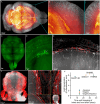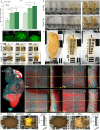Correction: ADAPT-3D:accelerated deep adaptable processing of tissue for 3-dimensional fluorescence tissue imaging for research and clinical settings
- PMID: 40983607
- PMCID: PMC12454630
- DOI: 10.1038/s41598-025-19773-2
Correction: ADAPT-3D:accelerated deep adaptable processing of tissue for 3-dimensional fluorescence tissue imaging for research and clinical settings
Figures


Erratum for
-
ADAPT-3D:accelerated deep adaptable processing of tissue for 3-dimensional fluorescence tissue imaging for research and clinical settings.Sci Rep. 2025 Aug 29;15(1):31841. doi: 10.1038/s41598-025-16766-z. Sci Rep. 2025. PMID: 40883418 Free PMC article.
Publication types
LinkOut - more resources
Full Text Sources

